Maybe it’s because I spent a lot of time at funerals when I was a kid, what with family situations and my status as a go-to altar boy for daytime services at St. Mary’s on Elm Street, after which I’d ride to the cemetery with Father Sise to help with the interment rites. But I’ll offer this: stopping by a cemetery in a big city is a peaceful pursuit that serves up a big dose of perspective, humility, and humanity.
Take Westwood Memorial Park in Los Angeles, for example. One of the most visited, they say – provided you can find it. It’s not far from the UCLA campus on Wilshire Boulevard and surrounded on three sides by tall office buildings that give no hint to what is behind. Angie and I went to LA last weekend for a concert and a couple days of sightseeing, and Westwood Memorial was on my list of stops.
That’s where you’ll find the unmarked grave of Frank Zappa. I had a rough idea of where to look; a caretaker spotted me clearly for one of the tombstone tourists who find their way to the little corner of the big city. “Who ya lookin’ for?” he asked. “Frank Zappa,” I said. “You’re pretty much standing on him,” he said, and walked away. Not far away was another unmarked plot, this one for the great Roy Orbison. I paid my respects.
Most who stop by Westwood do so to see the grave of Marilyn Monroe. Dean Martin is there, as are Don Knotts, Richard Dawson, Bob Crane and his wife (who played Helga alongside Bob on ‘Hogan’s Heroes’). Natalie Wood, Carl Wilson (he of the Beach Boys), Tim Conway. Walter Matthau and Merv Griffin, Peter Falk and Billy Wilder. Jack Lemmon and Florence Henderson. Eva Gabor and, not far away, her television husband, Eddie Albert (who’s there alongside his not-television wife).
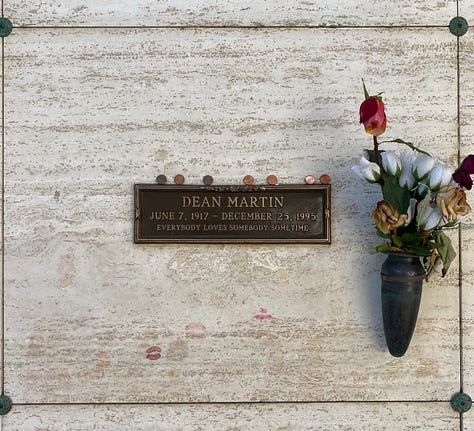
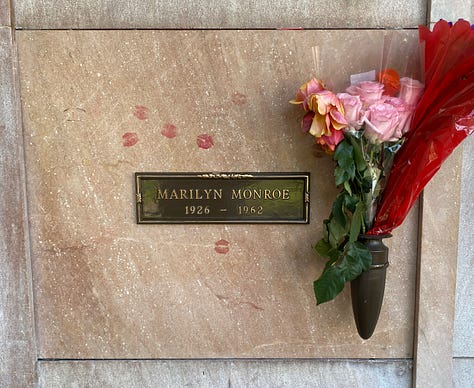
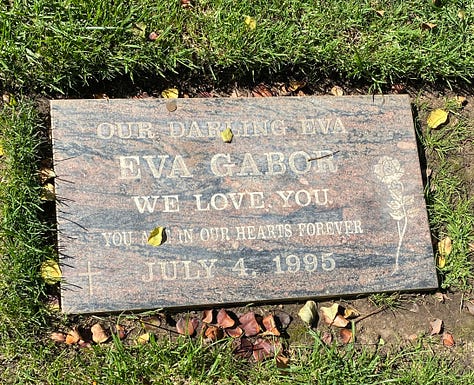
There they are, A-listers whose final resting places look no different than neighboring graves for the likes of Alta Mae Adams, the Brown family, the Cooks and Coopers and Thornes and Dadashis. Most of the celebrity memorials are nondescript – most far less ornate than those for people unknown to the world but clearly celebrities in the hearts of their own families. Nearly all refer not to the star’s resume but to their lives as human beings. “Loving husband, father, and grandfather” for Richard Dawson, not “Host of Family Feud and Newkirk on Hogan’s Heroes.” “The world is a far lesser place without you” for Carl Wilson, whose voice gave us God Only Knows and Feel Flows. “Loving father, loving husband” for Mel Torme.
On our drives back and forth across the country, we’ve taken a few minutes off the megahighways to meander through a cemetery in St. Louis (Chuck Berry, whose unmissable tomb stands tall immediately upon entry); Lubbock, Texas (Buddy Holly; you can’t miss him. His stone is flat on the ground as so many are. It looks, though, like a Boy Scout with a wood-burning pencil carved Buddy’s name into a giant wooden arrow pointing directly down to where you’d want to look); Tusla, Oklahoma (Roy Clark, Leon Russell, Bob Wills); Memphis, Tennessee (Charlie Rich and Isaac Hayes in one and, of course, Elvis Presley at Graceland). Each stop is a few quiet moments of respect and reflection. Not macabre at all.
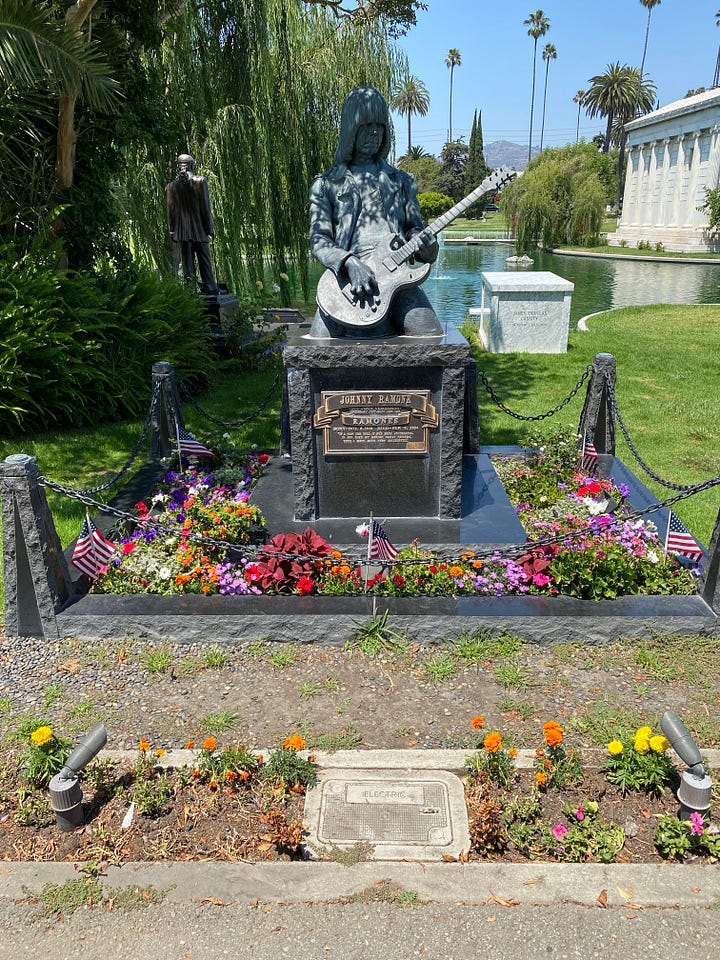
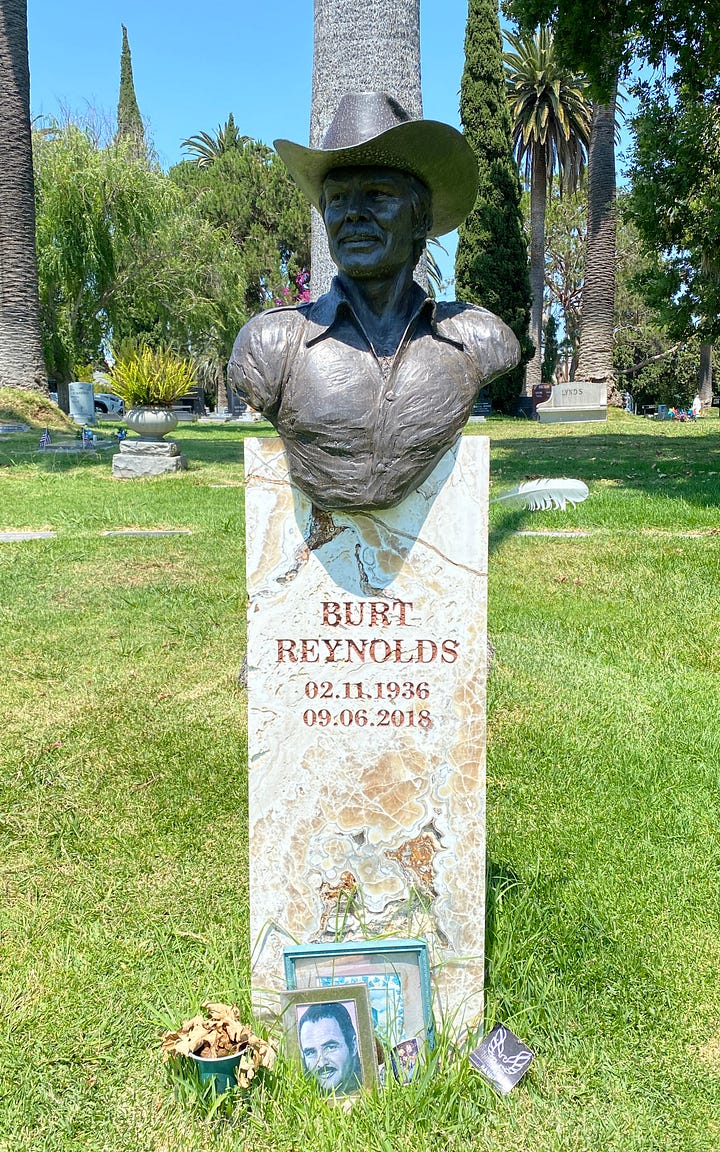
Speaking of Elvis, we’ve all seen “This is Spinal Tap.” You know the scene in which the band visits Graceland and takes a moment to sing a ‘barbershop raga’ arrangement of “Heartbreak Hotel” as they pay their graveside respects to The King:
“Really does put perspective on things, though, doesn’t it,” Nigel Tufnel says.
David St. Hubbins replies, “Too much! Too much (expletive) perspective!”
These cemetery visits indeed offer perspective – death being The Great Equalizer and all that. A-lister headstones are a somber reminder of the art they shared with us but, as they’re interspersed among the not-celebrities, they remind us that everyone brings something larger than life to the table.
There’s a lot of love in those cemeteries.
An outtake to Spinal Tap’s Graceland visit finds David St. Hubbins asking “Why don’t they make gravestones cheerier?” “Probably the whole death thing involved in it,” Nigel Tufnel replies.
Some cheer exists, though, among the quiet at Westwood. Merv Griffin “will not be right back after this message.”. “There goes the neighborhood” reads Rodney Dangerfield’s headstone. “I’m a writer,” reads Billy Wilder’s, “But then nobody’s perfect.”
My favorite, a little more subtle, perhaps, but I want to believe Jack Klugman – you know, Oscar Madison on “The Odd Couple” – purposefully has his memorial directly above the Unger sisters.
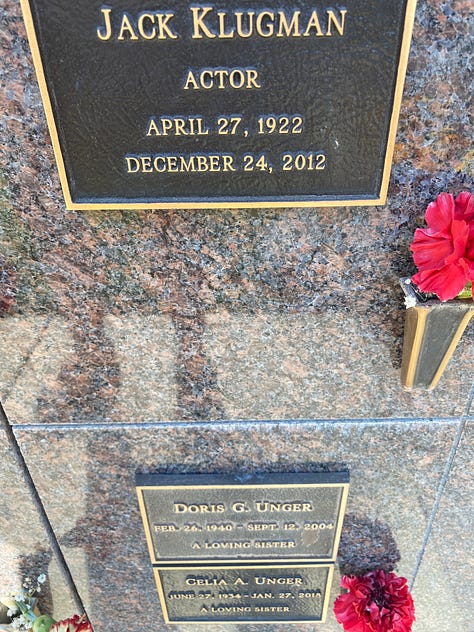
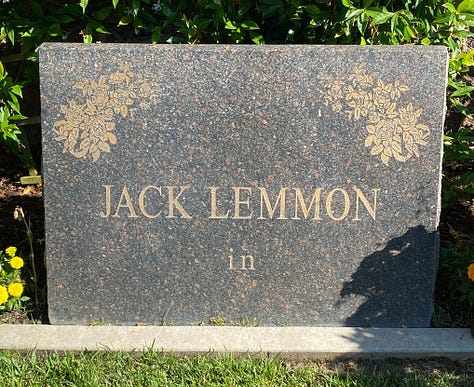

Perspective. Just enough.
For the uninitiated, here’s the aforementioned scene from “This is Spinal Tap,” without the expletive deleted.


Merv Griffin “will not be right back after this message.” Now that's funny!